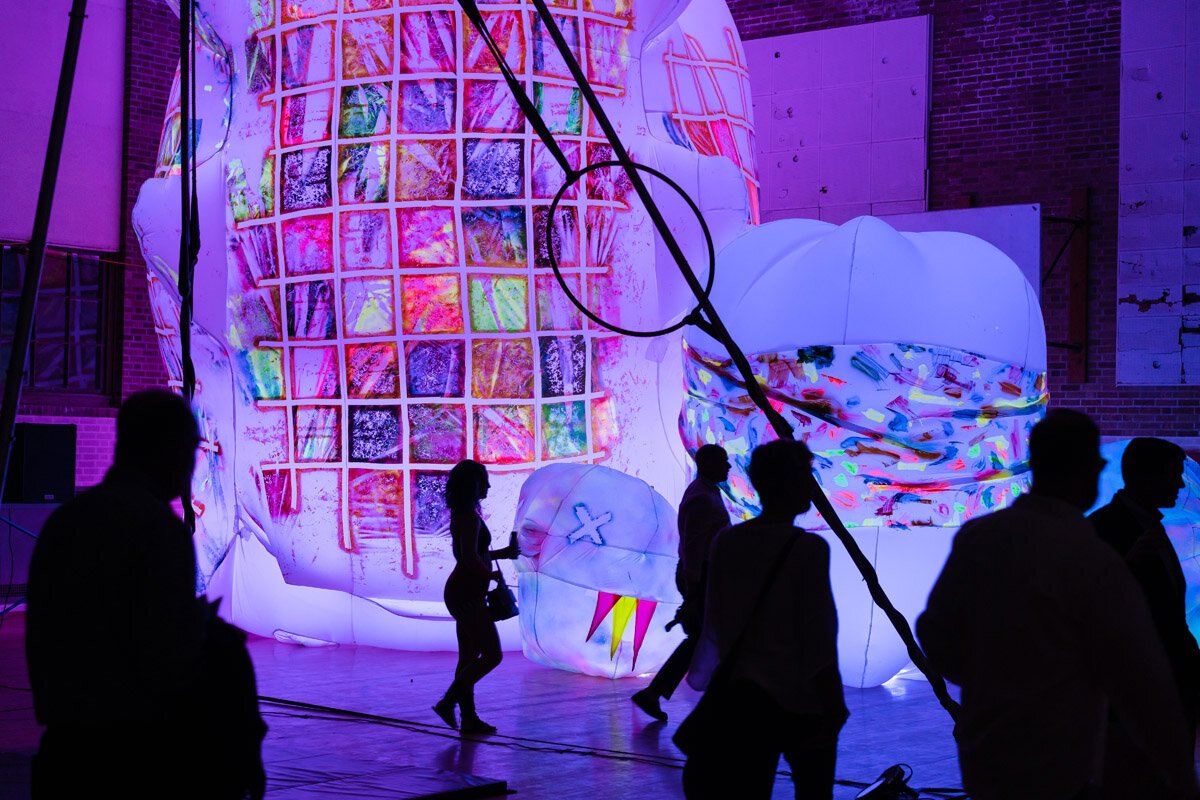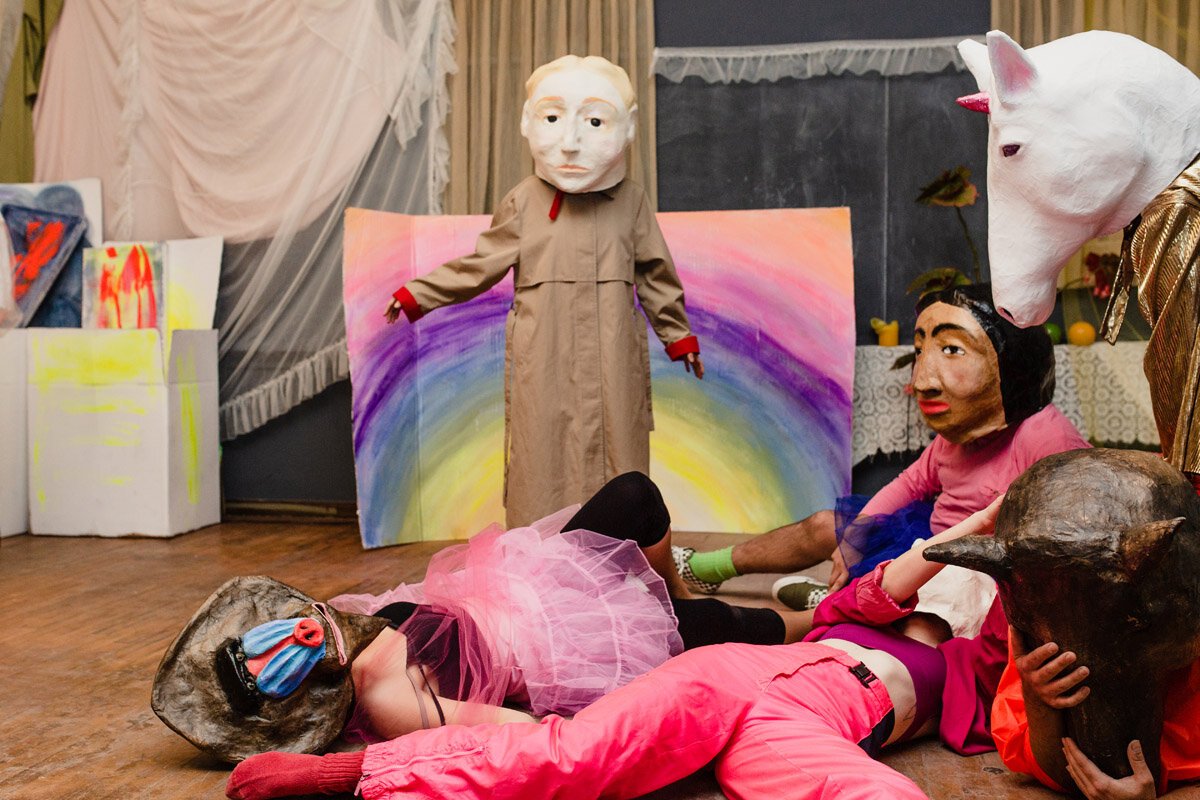PLAY/GROUND 2019
by
Nilson Carroll
Christa Trautman, Into the Void, 2019. Meccay Photography, courtesy Resource:Art.
Even as a member of the regional arts community, there was an air of mystery surrounding the weekend-long PLAY/GROUND: It’s in an old high school? In Medina? So on a Saturday afternoon, a group of friends and I piled into the car for a quest to Medina and its fugitive hub of installation art.
There were some immediate highlights in the repurposed classroom spaces and, in the case of Ulysses Athwen’s jarringly real boat on the lawn, even before you get in the door. Athwen’s Hegemony’s Arrow (2019) continues inside, filling a classroom with analog sound gadgets, maps, and renderings of the Erie Canal, which runs through Medina. Here, the immediate spectacle gives way to a more complex network of spatial and associative connections. Elsewhere, Evan Hawkins’s Abandon (2019), a dramatically lit shipwreck that appears to be stranded on the moon, transports an entire classroom into the ghostly void of outer space. A startling projection of Bruce Adams in bed cast on an actual bed in The Artist’s Dream (2019) forces viewers into an uncomfortable intimacy with the artist.
As much as PLAY/GROUND revels in its carnivalesque atmosphere of art, party, and play—take, for instance, the cast of giant-headed masked actors filling the space like sprites according to the impromptu instructions of artist Kyla Kegler—some of the strongest works here benefit by their remove from its chaotic transition areas, crowded hallways, and packed antechambers. Arrestingly quiet installations like Hawkins’s and the out-of-the-way Rays of Light—a collection of 35mm slides of forgotten landscapes repurposed as a dizzying, darkened installation by Jozef Bajus—work well because they feel separate from the body of PLAY/GROUND, adding a discontinuous, dreamlike quality to the rhythm of the exhibition.
Claire Ashley, Celestial Boulders (Unseen Organs), 2019. Meccay Photography, courtesy Resource:Art.
There is something about PLAY/GROUND that appeals first to the Instagrammer and not the traditional museum or gallery-goer. It is a vast, circus-like spectacle, and many of the works seem installed as backdrops to photographs of yourself or others. An impossibly long line of parents waited to take portraits of their children inside William Quintana and Christa Trautman’s Into the Void (2019), a human-sized glowing frame perfect for social media posts. Kids gleefully embraced the physicality of Colleen Toledano’s The Field (2019), scrambling up staircases and ladders to access a hidden garden space installed in a sort of drop ceiling, but I was barely able to experience the work within the crowd. Moments to reflect and ponder were few, and I felt rushed to leave each installation, even ones begging for more time. Adams’s compelling project, for example, was almost claustrophobic with people, and I had to flee after a few hurried moments. The narrow, echoing school hallways and tight classrooms make for interesting environments to explore but don’t allow the works much room to breathe.
The “work” that most caught my imagination was a haunted, Lynchian series of urinals positioned in complete darkness past Bethany Krull’s chilling The Canary is Long Dead (2019). As I peered into the roped-off bathroom in awe, other patrons came and went, checked their maps, spoke in whispers about “the piece.” Of course (cue the hackneyed jokes about contemporary art here), it was just an old high school bathroom, but this scenario speaks to the nature of how an effective installation can change our perspective and make us see the familiar in new ways.
Kyla Kegler, Do You Think My Head is Too Big?, 2019. Meccay Photography, courtesy Resource:Art.
Stepping back into the soggy Medina afternoon, I felt like a daydream had been interrupted. If nothing else, PLAY/GROUND serves as a fantasy world, collaboratively created by the hands of many regional artists and brought together by the Buffalo-based Resource:Art in partnership with Hallwalls Contemporary Arts Center and Rochester Contemporary Art Center. It fits neatly, for better or worse, alongside the family-friendly cultural attractions available in Rochester: The Strong, for instance, or much of the Rochester Fringe Festival. Still, there’s something almost subversive about what PLAY/GROUND asks of its visitors: to spend a weekend completely entangled in an overwhelming amount of experiential art, searching only for play and revelation.
Nilson Carroll is a barista-poet, queer video game artist, and MFA candidate at Visual Studies Workshop in Rochester, NY (Blood Type: Unknown)



